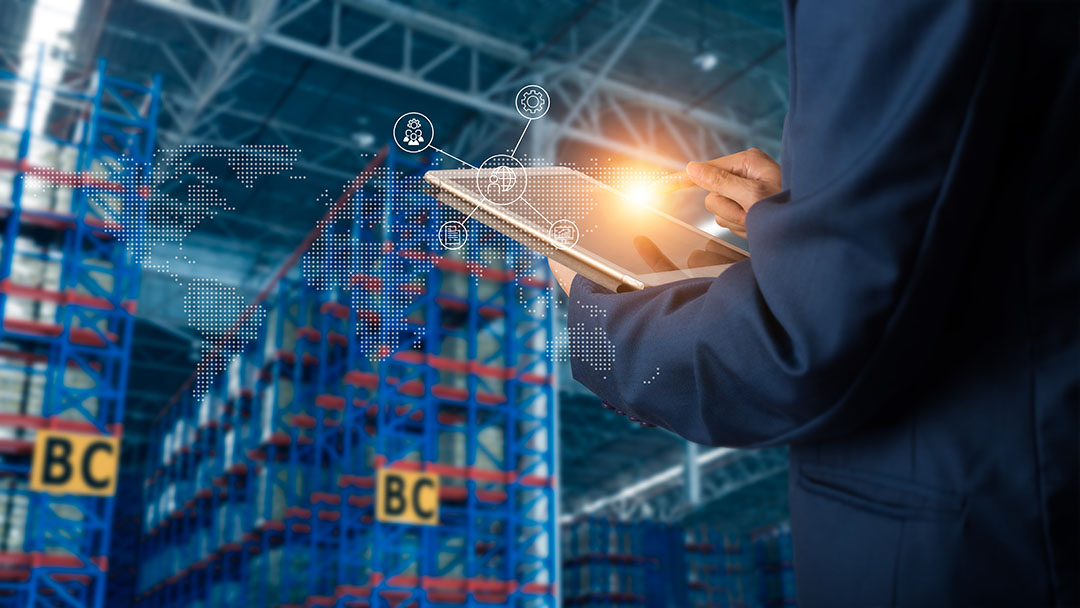Site to Strategy: Move into senior roles with engineering management
Study a Master of Engineering Management fully online and learn how you can move into senior roles.
Read More

The journey of a product from a warehouse shelf to a customer's hands is far more complex than it appears. This intricate dance of logistics, known as the supply chain, has traditionally been a manual process, prone to human error and inefficiency. However, the advent of smart technology is revolutionising this field, particularly in the critical area of inventory tracking. For businesses, understanding and implementing effective inventory management systems is no longer just an advantage - it's essential for survival and growth in a competitive marketplace.
For decades, the barcode was the gold standard in inventory management. While effective, it required manual, line-of-sight scanning, which could be time-consuming and inefficient in large-scale operations. Today, technologies like Radio-Frequency Identification (RFID) and the Internet of Things (IoT) are taking over, offering real-time visibility and automation that were once unimaginable.
The integration of Artificial Intelligence (AI) and robotics is pushing the boundaries of what's possible in warehouse management. AI-powered systems can analyse vast amounts of data in autonomous audits to predict demand, optimise stock levels, and even automate ordering, a key component of automated ordering and replenishment systems. This forecasting helps businesses avoid stockouts and reduce the cost of holding excess inventory.
Meanwhile, autonomous drones are being deployed to perform stock-taking duties. Equipped with high-resolution cameras and scanners, these drones can navigate large warehouses, scanning barcodes or RFID tags far faster and more accurately than human workers. A South African tech firm, Drone Scan, has developed a unique inventory-counting drone system that has been adopted by major logistics companies, showcasing local innovation in this global trend. This not only improves accuracy but also enhances worker safety by eliminating the need for staff to work at heights.
The true power of these technologies lies in their integration. An IoT sensor that detects low stock on a shelf can trigger an AI system to automatically place a purchase order, while RFID confirms the new shipment's arrival, and a drone verifies its placement in the warehouse. This creates a seamless, self-regulating ecosystem that minimises waste and maximises efficiency.
As these future trends in inventory management become more prevalent, the demand for skilled professionals who can effectively manage these complex systems will increase. Understanding the principles of logistics, data analysis, and retail operations is crucial. Pursuing a qualification like the Diploma in Retail Business Management can provide aspiring managers with the foundational knowledge needed to lead in this technologically advanced landscape, turning supply chain challenges into strategic advantages.
The primary advantage is speed and efficiency through non-line-of-sight, bulk scanning. A barcode requires a direct line of sight and must be scanned individually. In contrast, an RFID reader uses radio waves to read hundreds of tags simultaneously, even through cardboard boxes or packaging. This transforms time-consuming tasks like receiving shipments or performing a full warehouse stock-take from a multi-hour manual process into a task that can be completed in minutes, with far greater accuracy.
While RFID tags are more expensive per unit than printed barcode labels, the cost has decreased significantly over the years. The decision should be based on the potential return on investment (ROI). For businesses dealing with high-volume or high-value goods, the savings in labour costs, the dramatic increase in inventory accuracy, and the reduction in theft can quickly justify the initial investment. Many businesses adopt a phased approach, initially using RFID to track larger assets like pallets or reusable containers before moving to item-level tagging.
Using a scanner is an active, manual process - a person must perform an action to capture a single data point at a specific moment in time. An IoT ecosystem provides passive, continuous data automatically. IoT devices, such as smart shelves with weight sensors, GPS trackers on vehicles, or temperature monitors in a cold chain, send a constant stream of information to your IMS without any human intervention. This creates a live, 24/7 view of your inventory's location, condition, and status, rather than just periodic snapshots.
Standard reports tell you what has already happened. Artificial Intelligence (AI) and machine learning analyse vast amounts of data to predict what will likely happen next and help you understand why. AI doesn't just look at your past sales; it can identify complex patterns in market trends, promotional activities, and even external factors like weather to create far more accurate demand forecasts. It turns your system from a historical record-keeper into a forward-looking strategic tool.
No, and it's generally not recommended. These technologies represent an evolutionary path. Most businesses build a solid foundation with cost-effective barcoding to ensure basic accuracy. As they scale, they might introduce RFID in the warehouse to improve receiving speed. Later, IoT sensors could be added to track high-value shipments. AI is typically the final, intelligent layer that analyses all the data being collected. A phased approach that targets your biggest pain point first is the most effective strategy.
Study online with TUT